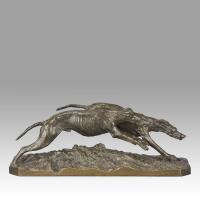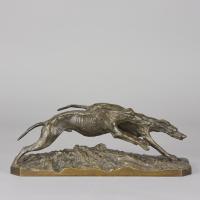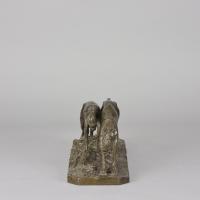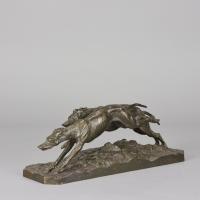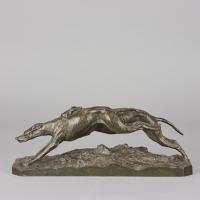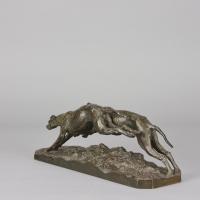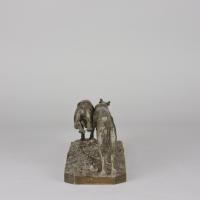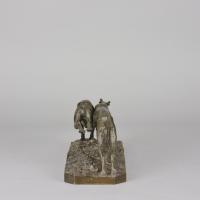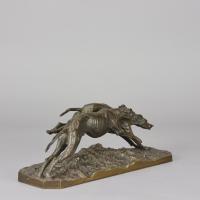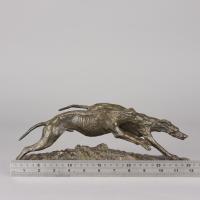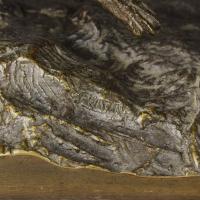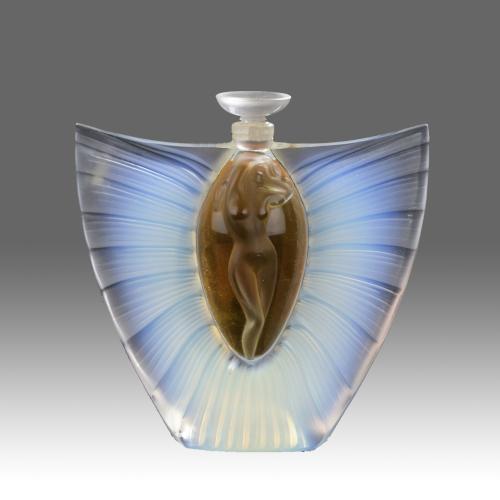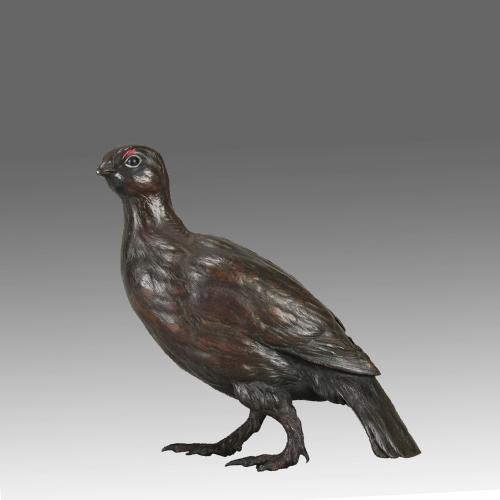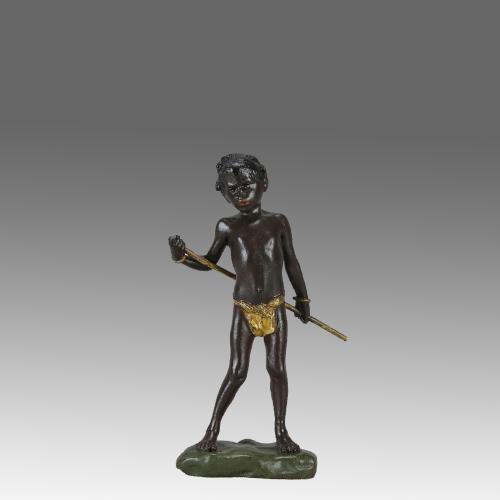
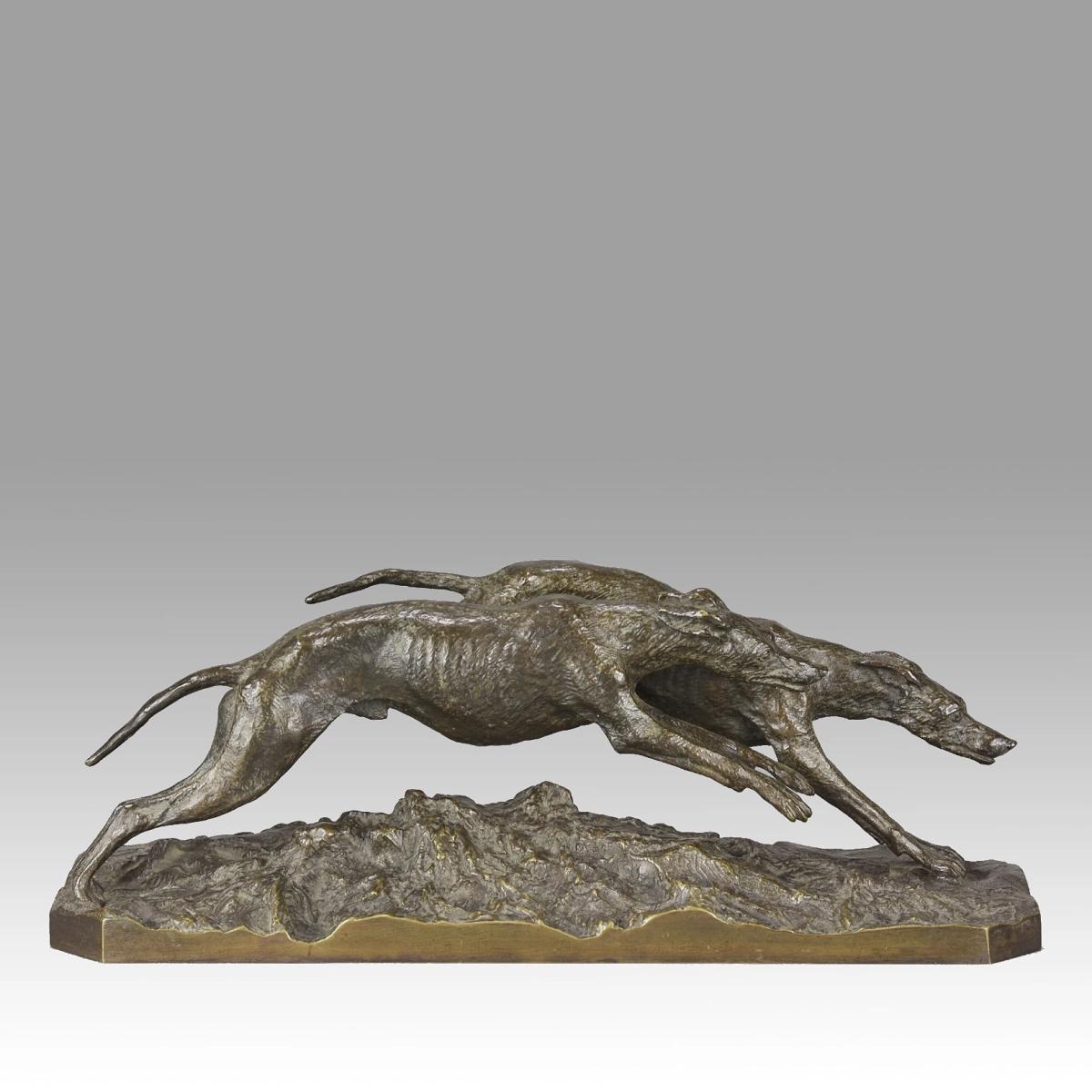
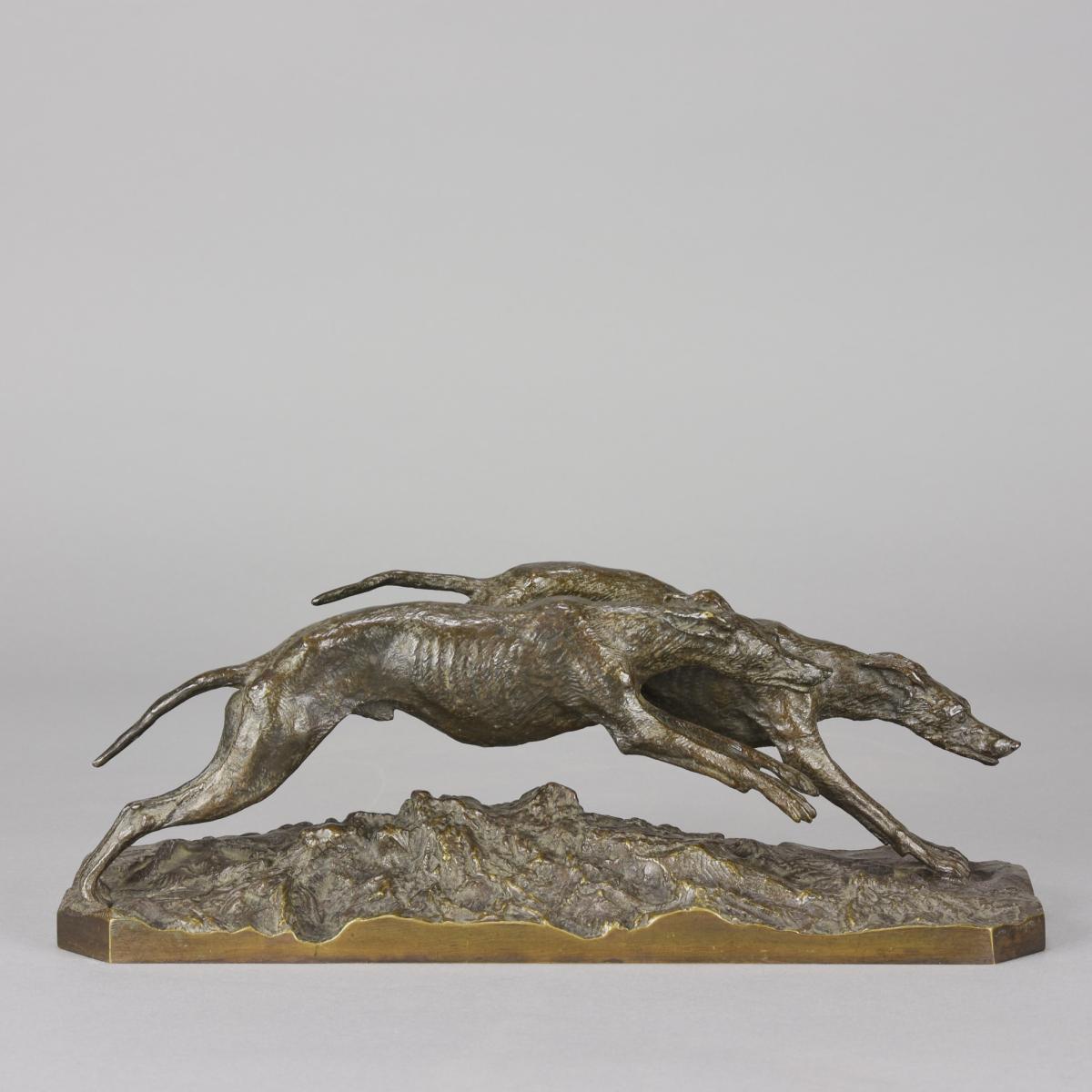
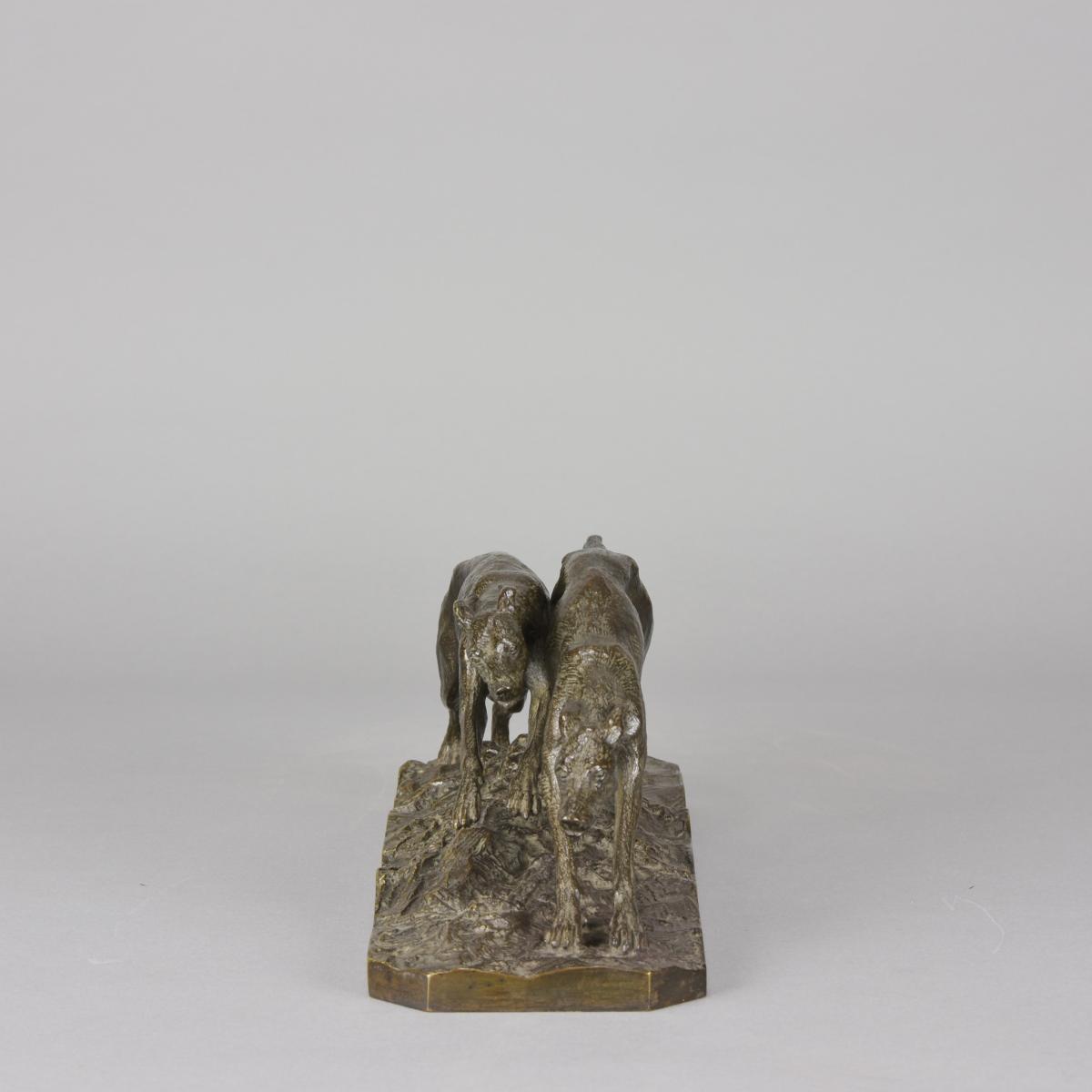
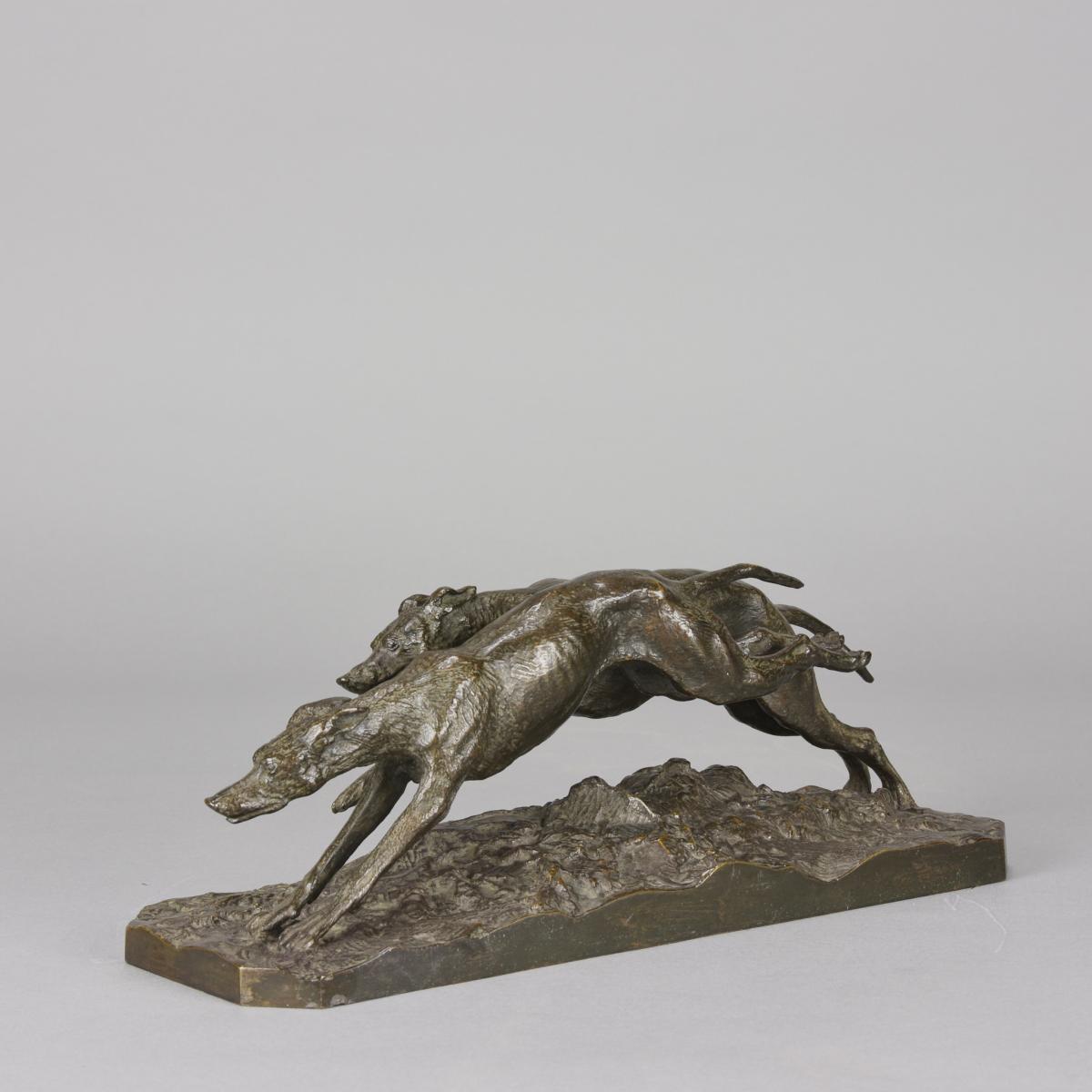
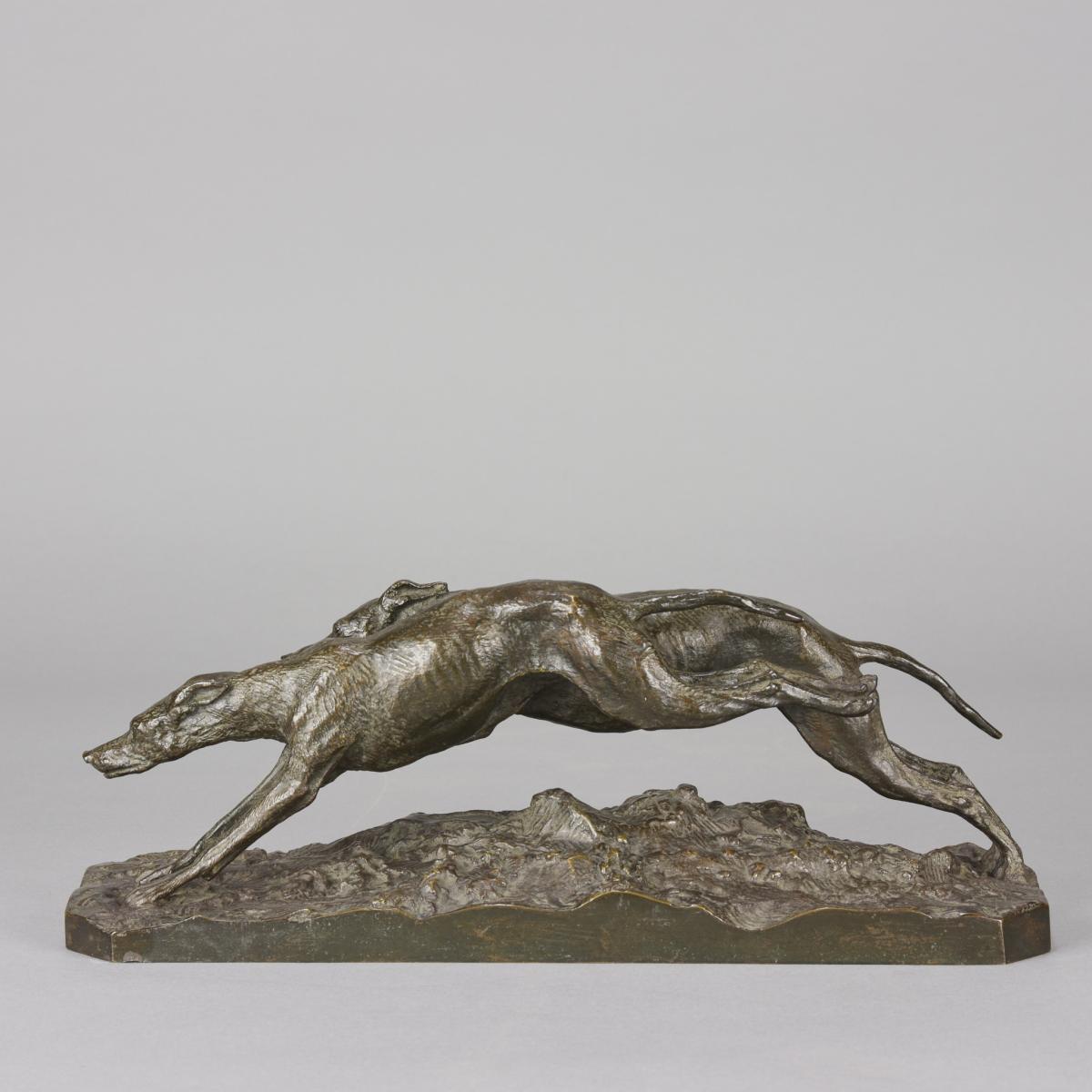
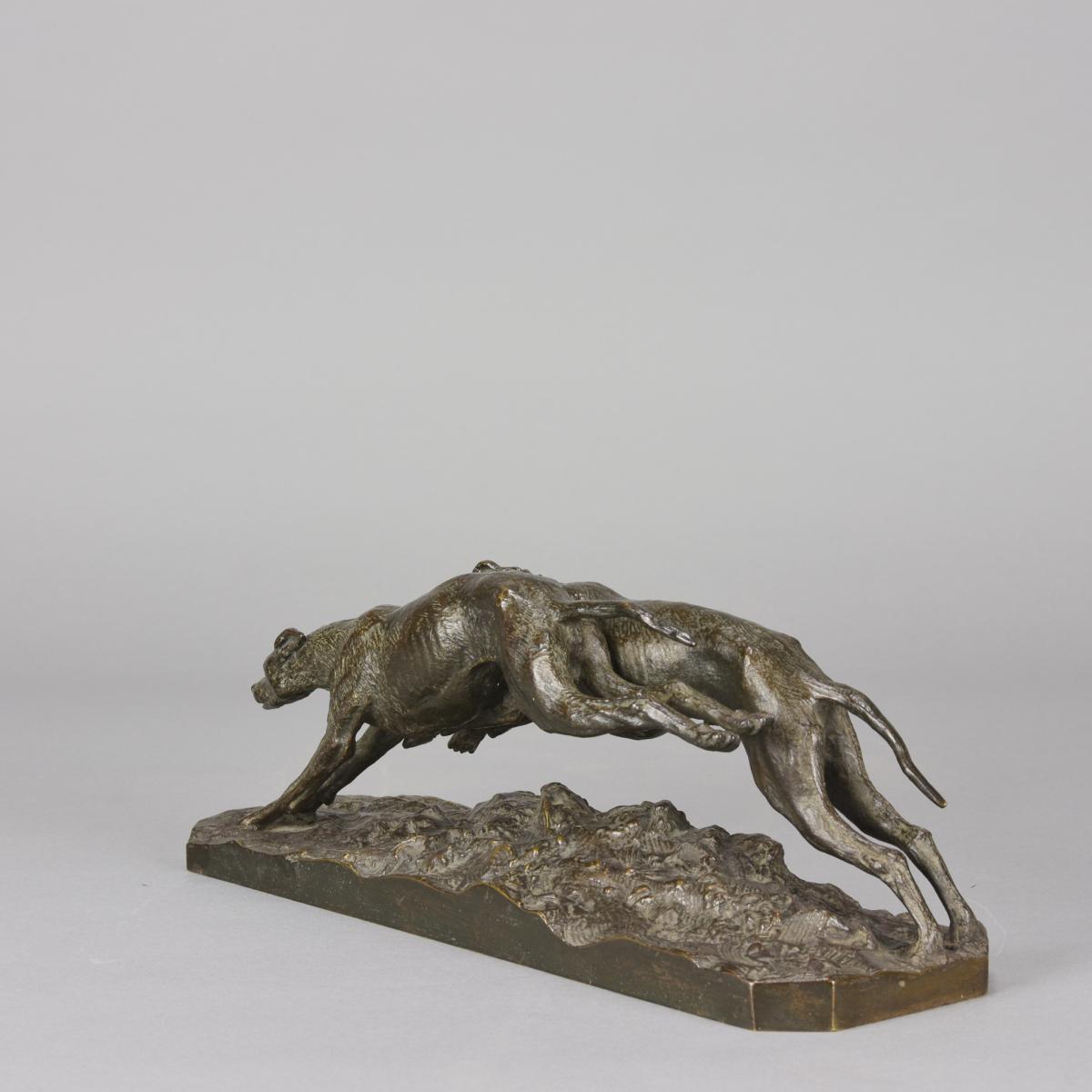
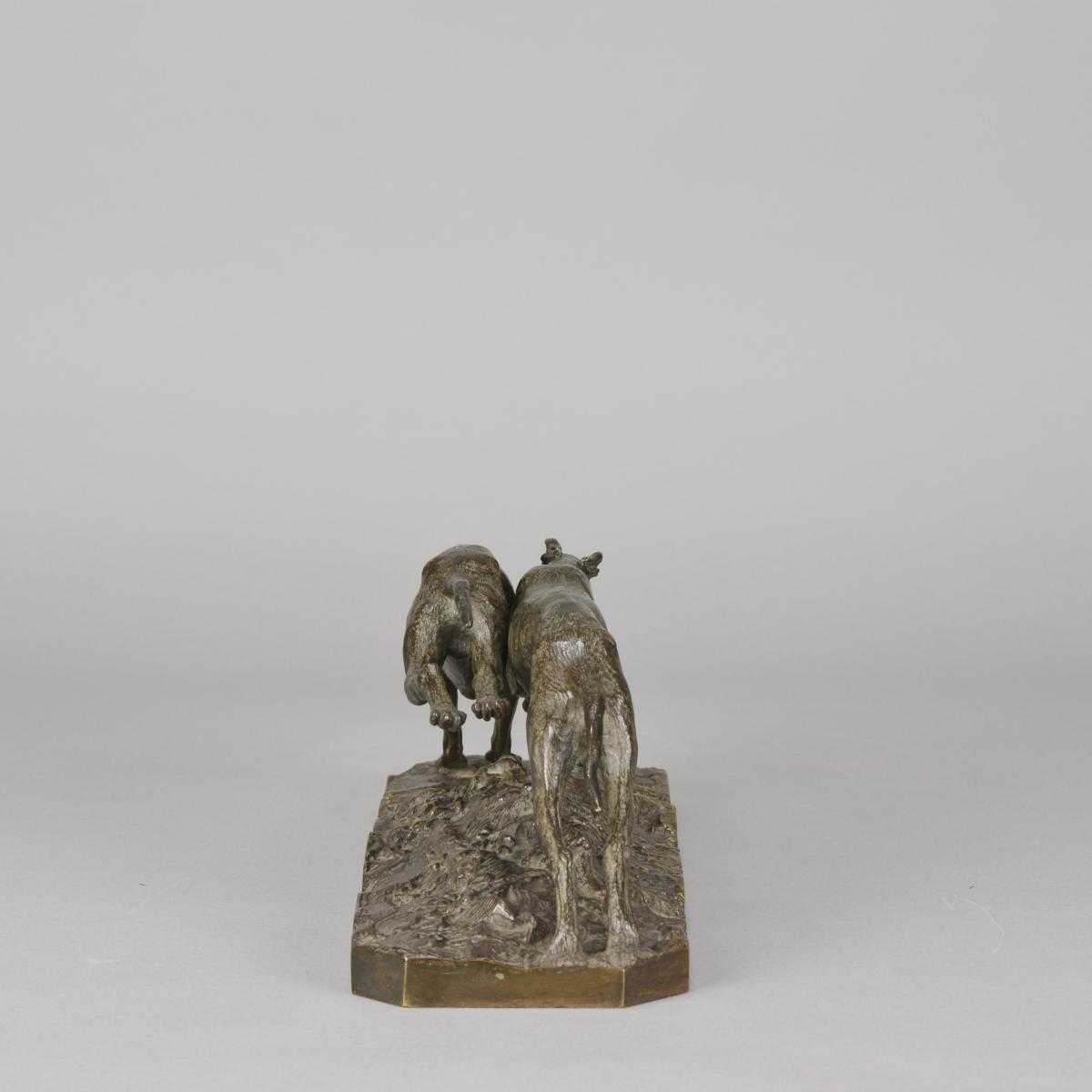
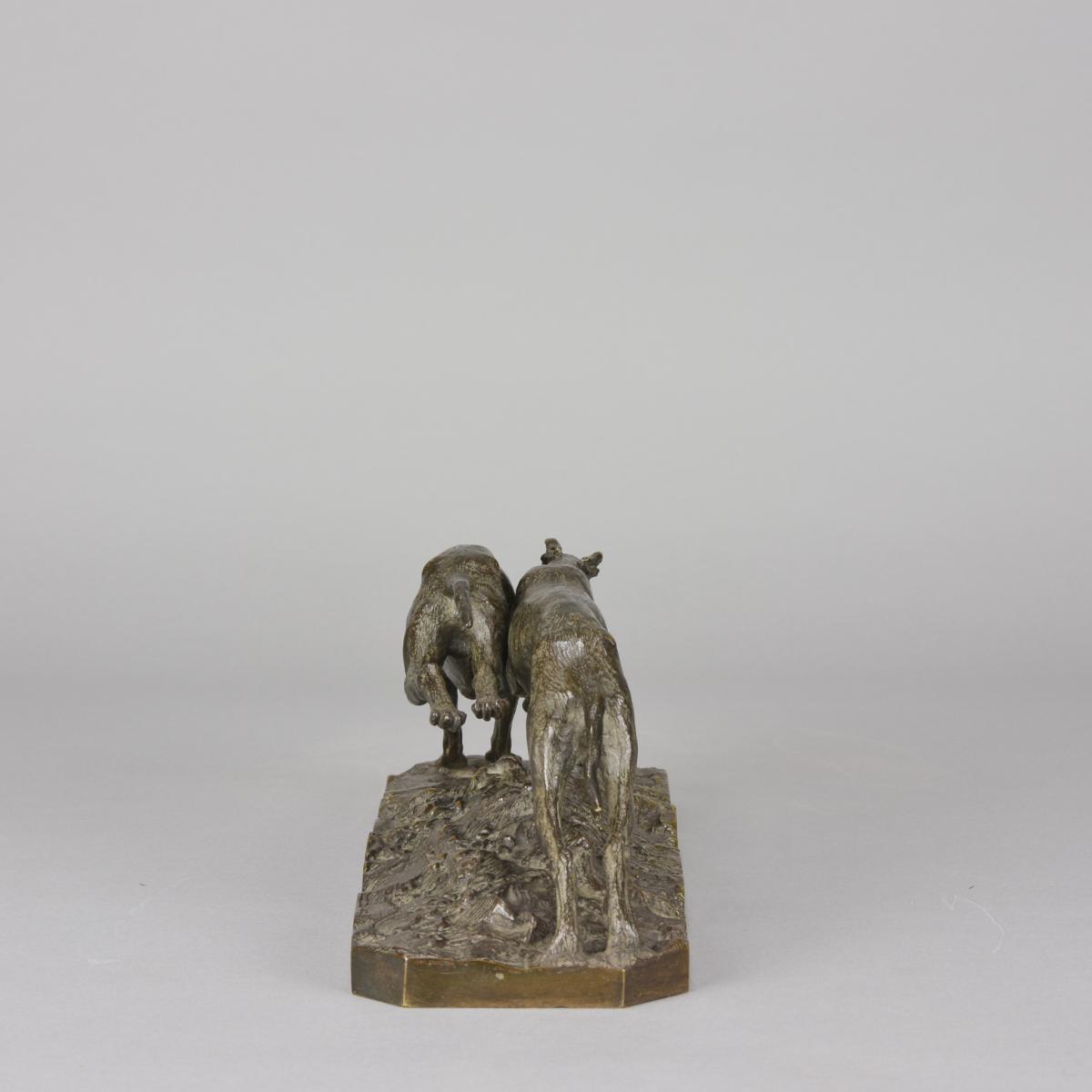
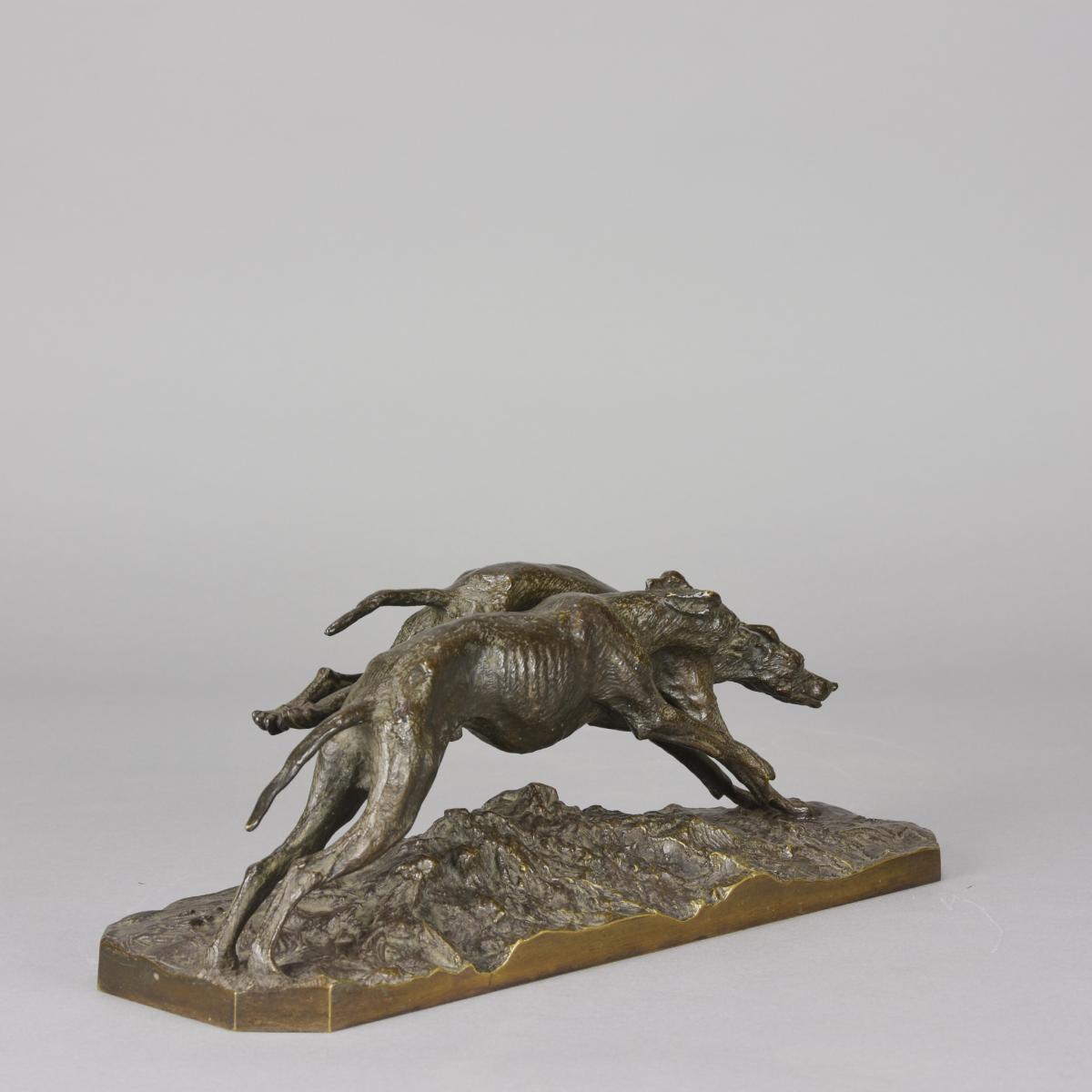
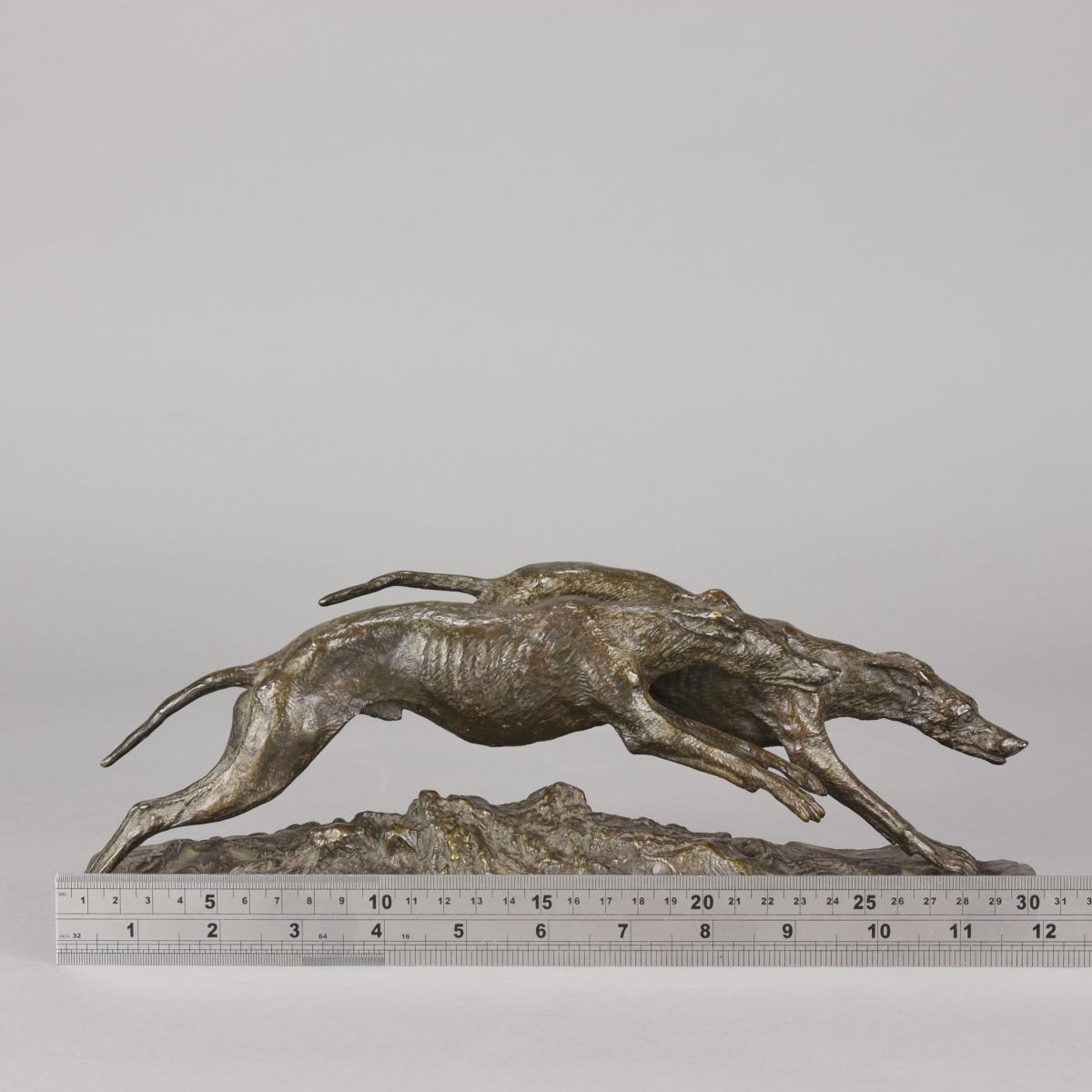
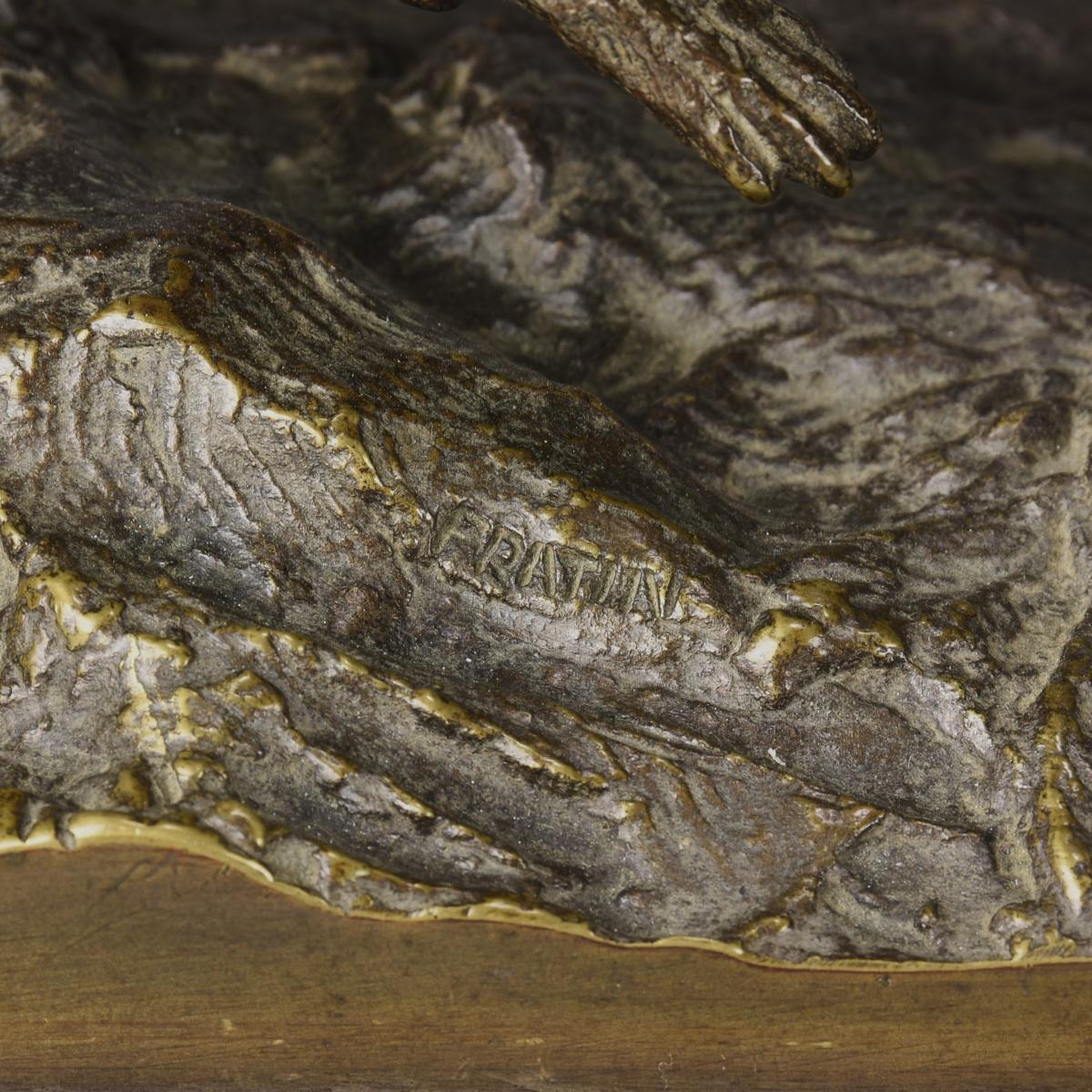
Price
£2850.00This object is eligible for a Certificate of BADA Provenance
The BADA Standard
- Since 1918, BADA has been the leading association for the antiques and fine art trade
- Members are elected for their knowledge, integrity and quality of stock
- Our clients are protected by BADA’s code of conduct
- Our dealers’ membership is reviewed and renewed annually
- Bada.org is a non-profit site: clients deal directly with members and they pay no hidden fees
A fabulous Animalier bronze group of two racing greyhounds with excellent hand chased surface detail and appealing lightly worn golden brown patina, raised on a highly detailed naturalistic base, signed FRATIN.
ADDITIONAL INFORMATION
Height: 11 cm.
Width: 31 cm.
Condition: Excellent Original Condition.
Circa: 1850.
Materials: Bronze.
Book reference: Animals in Bronze by Jane Horswell.
Page No: 86.
SKU: 8402.
ABOUT
Christophe Fratin
Christope Fratin (French, 1801 ~ 1864) Fratin was born in Metz, the son of a taxidermist, from whom he acquired a sound knowledge of anatomy. He began exhibiting at the Salon in 1831 showing wax models of the English thoroughbred ‘Farmer’ and a study of Two Bulldogs fighting over a Hare. He worked exclusively as an animalier and produced numerous small busts of dogs, horses, domestic animals and their prey. He exhibited at the salon from 1831 to 1839 and from 1850 to 1864. Among his best known works is the group of two eagles guarding their prey in New York’s Central Park.
Animalier
In the Paris Salon of 1831 when Antoine Louis Barye exhibited his first animal sculpture, one zealous French art critic dubbed him an Animalier: maker of animals, the species deprived of human nobility. This was intended as a criticism and not a flattering title. This perception changed in the 1830’s when the new monarch, King Louis-Philippe gave several public commissions to Barye. The King’s son, the Duc d’Orleans, also became Barye’s patron and by the middle of the 19th Century, any artist was proud to be known as an Animalier.
Although many earlier examples can be found, animalier sculpture became more popular, and reputable, in early 19th century Paris with the works of Antoine-Louis Barye (1795–1875) for whom the term was coined and who became the ‘Father of the Animaliers School’ and Pierre Jules Mêne considered the finest realist sculptor of the era. By the mid-century, a taste for animal subjects was very widespread among all sections of society.
Stock number
8402The BADA Standard
- Since 1918, BADA has been the leading association for the antiques and fine art trade
- Members are elected for their knowledge, integrity and quality of stock
- Our clients are protected by BADA’s code of conduct
- Our dealers’ membership is reviewed and renewed annually
- Bada.org is a non-profit site: clients deal directly with members and they pay no hidden fees


